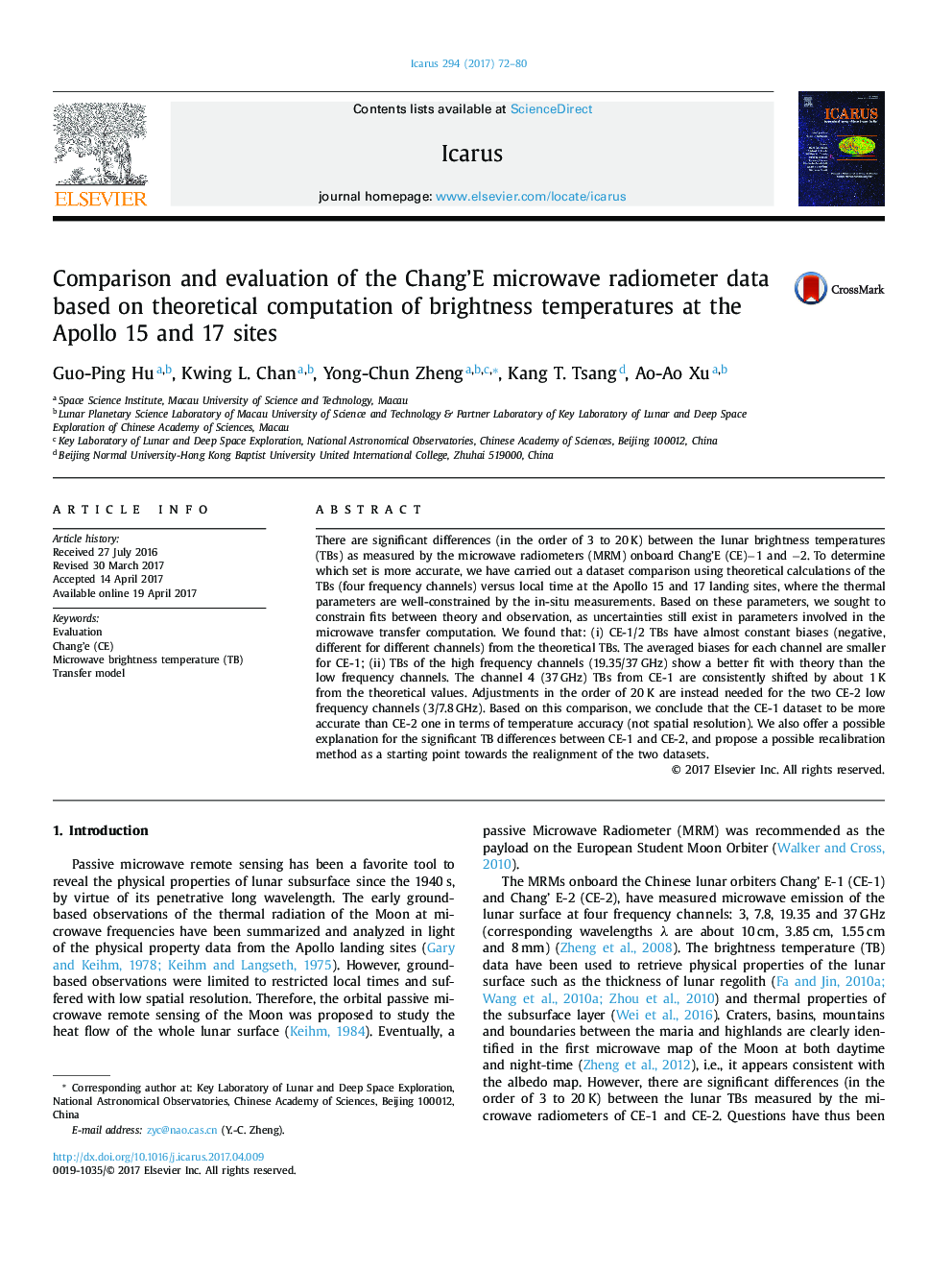| Article ID | Journal | Published Year | Pages | File Type |
|---|---|---|---|---|
| 5487382 | Icarus | 2017 | 9 Pages |
Abstract
There are significant differences (in the order of 3 to 20Â K) between the lunar brightness temperatures (TBs) as measured by the microwave radiometers (MRM) onboard Chang'E (CE)â1 and â2. To determine which set is more accurate, we have carried out a dataset comparison using theoretical calculations of the TBs (four frequency channels) versus local time at the Apollo 15 and 17 landing sites, where the thermal parameters are well-constrained by the in-situ measurements. Based on these parameters, we sought to constrain fits between theory and observation, as uncertainties still exist in parameters involved in the microwave transfer computation. We found that: (i) CE-1/2 TBs have almost constant biases (negative, different for different channels) from the theoretical TBs. The averaged biases for each channel are smaller for CE-1; (ii) TBs of the high frequency channels (19.35/37Â GHz) show a better fit with theory than the low frequency channels. The channel 4 (37Â GHz) TBs from CE-1 are consistently shifted by about 1Â K from the theoretical values. Adjustments in the order of 20Â K are instead needed for the two CE-2 low frequency channels (3/7.8Â GHz). Based on this comparison, we conclude that the CE-1 dataset to be more accurate than CE-2 one in terms of temperature accuracy (not spatial resolution). We also offer a possible explanation for the significant TB differences between CE-1 and CE-2, and propose a possible recalibration method as a starting point towards the realignment of the two datasets.
Keywords
Related Topics
Physical Sciences and Engineering
Earth and Planetary Sciences
Space and Planetary Science
Authors
Hu Guo-Ping, Chan Kwing L., Zheng Yong-Chun, Tsang Kang T., Xu Ao-Ao,
